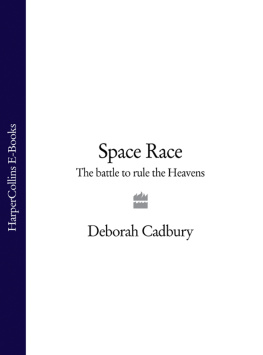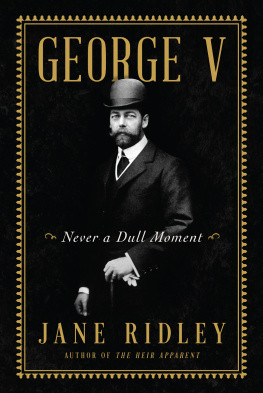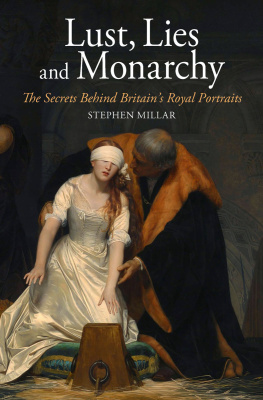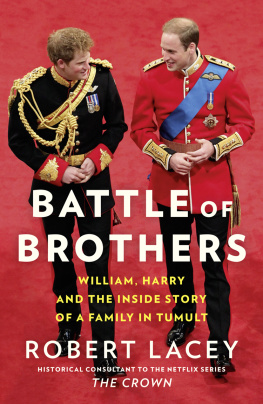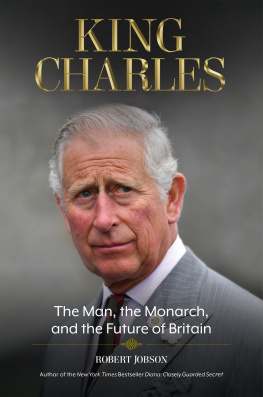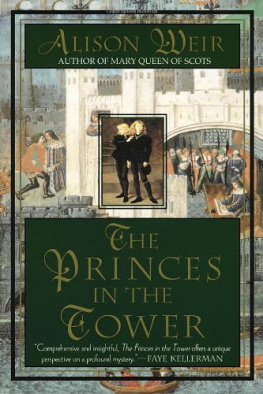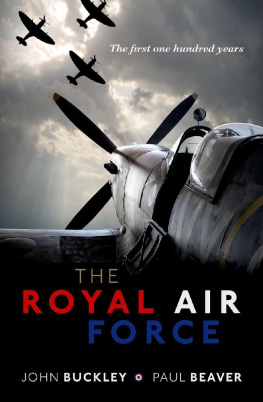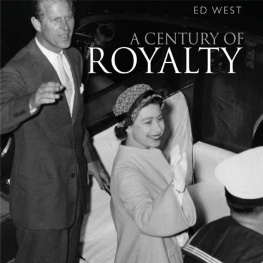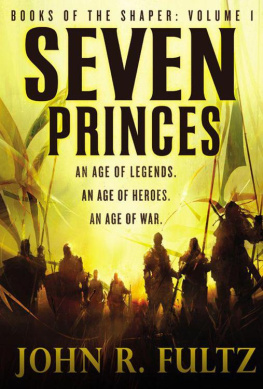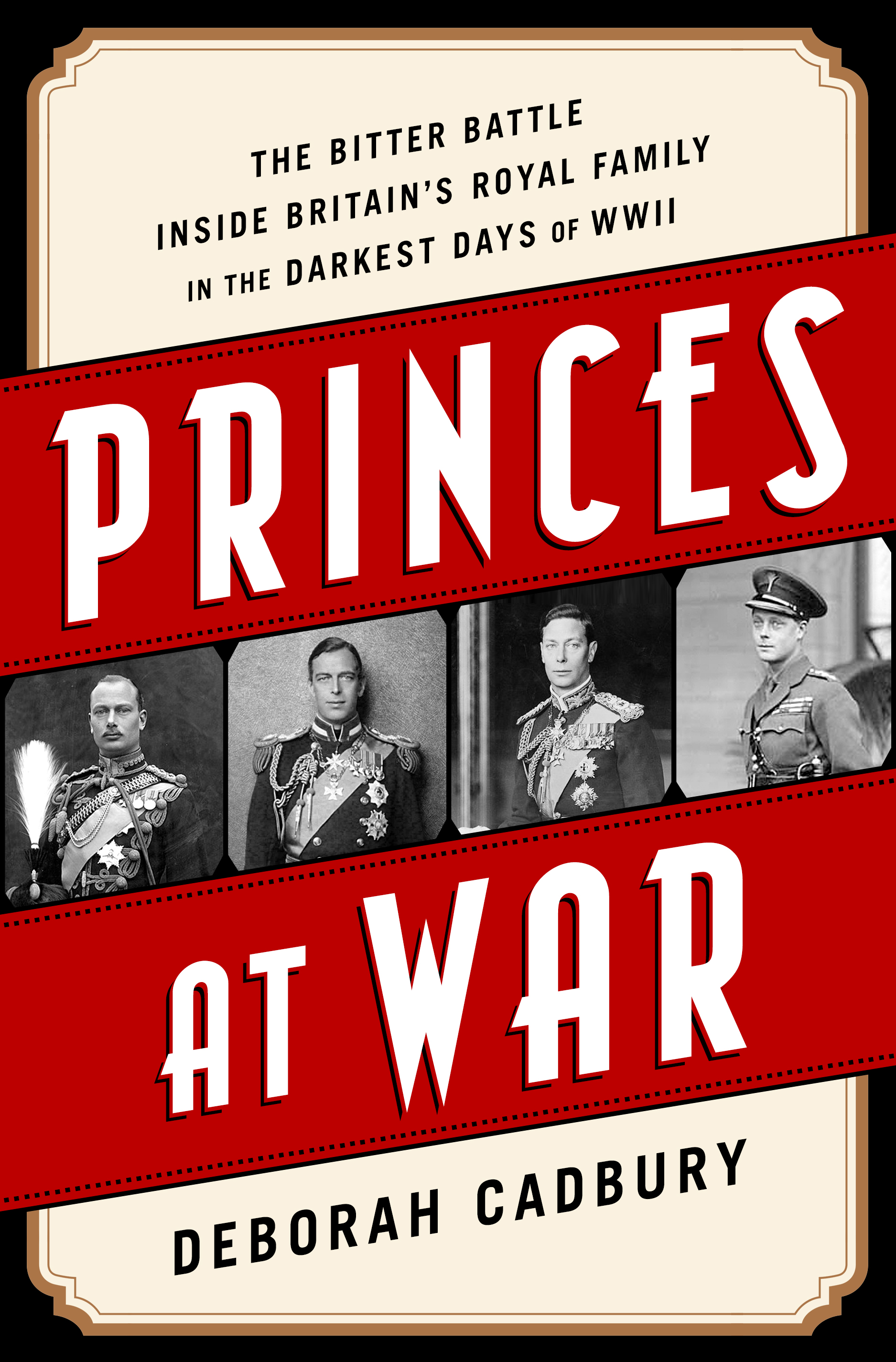Princes at War
Also by Deborah Cadbury
The Feminization of Nature
The Dinosaur Hunters
The Lost King of France
Seven Wonders of the Industrial World
Space Race
Chocolate Wars: The 150-Year Rivalry Between the Worlds Greatest Chocolate Makers
Princes at War
The Bitter Battle Inside Britains Royal Family
in the Darkest Days of WWII
Deborah Cadbury

PublicAffairs
New York
Copyright Deborah Cadbury 2015
Published in the United States by PublicAffairs, a Member of the Perseus Books Group
All rights reserved.
Printed in the United States of America.
No part of this book may be reproduced in any manner whatsoever without written permission except in the case of brief quotations embodied in critical articles and reviews. For information, address PublicAffairs, 250 West 57th Street, th Floor, New York, NY 10107.
PublicAffairs books are available at special discounts for bulk purchases in the U.S. by corporations, institutions, and other organizations. For more information, please contact the Special Markets Department at the Perseus Books Group, 2300 Chestnut Street, Suite 200, Philadelphia, PA 19103, call (800) 810-4145, ext. 5000, or e-mail special.markets@perseusbooks.com.
First published in Great Britain in 2015 by Bloomsbury Publishing Plc
ISBN: 978-1-4-088-4524-0 (UK hardback)
Designed by Jack Lenzo
Text set in Garamond
A catalog record for this book is available from the Library of Congress.
Library of Congress Control Number: 2014957933
ISBN: 978-1-61039-404-8 (e-book)
First Edition
10 9 8 7 6 5 4 3 2 1
To Julia, Pete and Jo,
with love
Contents
: December 1936September 1939
Circumstances Without Parallel
A Very Full Heart
Enmity and Fear
: September 1939August 1940
In this Grave Hour
Into the Unknown
The Decisive Struggle
Treachery
: August 1940December 1942
There Will Always Be an England
Ever Widening Conflict
Its My Brother
: January 1943January 1952
Tested as Never Before in Our History
Something More than Courage
For Valour
The leading royal princes and their wives have several titles and for ease of reference these are set out below.
House of Windsor
George VI (r. 1936)
Known as HRH The Duke of York 1920
Born as Prince Albert (1895)
Married Lady Elizabeth Bowes-Lyon
who became Queen Elizabeth (1936)
HRH The Duke of Windsor (1936)
who was Edward VIII (JanuaryDecember 1936)
Born as Prince Edward (1894)
known as David or D by his family
Married Wallis Simpson,
known as the Duchess of Windsor (1937)
HRH The Duke of Gloucester (1928)
Born as Prince Henry (1900)
Married Lady Alice Montagu-Douglas-Scott,
known as HRH the Duchess of Gloucester (1935 2004 )
HRH The Duke of Kent (1934)
Born as Prince George (1902)
Married Princess Marina of Greece and Denmark,
known as HRH the Duchess of Kent (1934)
Notable German descendants of Queen Victoria during the Second World War
House of Hesse
Prince Philipp of Hesse (1896 1980 ), great-grandson of Queen Victoria
Married Princess Mafalda , daughter of King Victor Emanuel of Italy
Prince Christoph of Hesse (1901), great-grandson of Queen Victoria
Married Princess Sophia of Greece and Denmark
House of Saxe-Coburg
Charles Edward, Duke of Saxe-Coburg & Gotha (1884 1954 )
Grandson of Queen Victoria
Additional characters: friends or associates of the Duke and Duchess of Windsor
Betty Lawson-Johnston
American high-society friend of the Dukes of Kent and Windsor, married to British businessman and philanthropist, Ormond Lawson-Johnston
Charles and Fern Bedaux
Charles Bedaux: American citizen, millionaire entrepreneur, associate of the Duke and Duchess of Windsor
Axel Wenner-Gren
Swedish citizen, millionaire creator of the Electrolux Company, owner of the worlds largest yacht and friend of the Duke of Windsor
Ricardo Esprito Santo Silva
Portuguese host to the Duke of Windsor, banker and, according to British intelligence, suspected of laundering German funds looted from captive countries
Friends or advisers to George VI
Sir John The Snake Simon
Home Secretary 1935
Chancellor 1937
Lord High Chancellor 1940
The Viscount Halifax, The Holy Fox
Foreign Secretary 1938
British Ambassador to the United States 1940
Neville Chamberlain, The Old Umbrella
Prime Minister 1937
Franklin D. Roosevelt and Eleanor Roosevelt
President and First Lady of the United States 1933
And finally
Winston Churchill
Prime Minister 1940, 1951
0 May 1910. The streets below Windsor Castle were filled with crowds waiting for a sight of the gun carriage. Every window, roof top and ledge was commandeered to watch King Edward VIIs coffin complete the final stage of its journey. The late king, a once wayward youth, had become a popular monarch, the Uncle of Europe whose contribution, especially in foreign diplomacy was respected. Thousands had passed silently by the kings body when it lay in state in Westminster Hall. Even larger crowds watched the magnificent royal procession along the funeral route in London. The streets of Windsor offered a last chance for a glimpse of the great monarch who was to be buried as he had lived, in unimaginable splendour, accompanied on his way by many of the crowned heads of Europe. The solemn and carefully stage-managed event would unite royal relatives from across Europe in a unique pageant.
Nine years had elapsed since the death of Queen Victoria and yet her all-pervasive influence had continued with a momentum of its own through her descendants. In her later years the great matriarch had tried to maintain royal power through the dynastic marriages of her forty-two grandchildren. Her grandchildren and great-grandchildren from her marriage to her beloved Prince Albert of Saxe-Coburg formed a galaxy of Emperors, Kings, Princes, Grand Dukes and Dukes. By 1910, this dazzling constellation counted among their number the heirs to the British throne as well as the German Emperor, the Tzar of all the Russias, and cousins, uncles and aunts married into the royal houses of Norway, Greece, Spain, Denmark, Romania, Belgium, Portugal, Bulgaria and a myriad of princely dynasties. To the people in the streets they were the celebrities of their day. Photographs of royalty were included in family albums as a talking point, royal visitors to England were followed in newspaper reports, and on 20 May many of these commanding figures would be in the streets of Windsor.
The royal train steamed into Windsor station from London. Edward VIIs coffin was lifted onto a gun carriage and slowly the cortege, almost hidden from view by the accompanying Blue Coats, carried the King through the thronging streets to St Georges Chapel. Behind the procession of Blue Coats came nine of Europes monarchs, mounted on horseback, resplendent in military or ceremonial dress. To onlookers this appeared to be where absolute power resided, among the glittering plumed heads of Europe, difficult to distinguish among all the feathers and finery of their elaborate costumes. The new British king, George V, led the monarchs, followed closely by his cousin, the Emperor of Germany, Kaiser Wilhelm II, on a white horse. Behind came seven other sovereigns and their entourages: the late kings son-in-law, King Haakon VII of Norway, his brothers-in-law, George I of Greece and Frederick VIII of Denmark, his nephew-in-law, King Alfonso XIII of Spain, and more distant cousins, King Albert I of Belgium, King Manuel II of Portugal and Tzar Ferdinand of Bulgaria. The kings were followed at a measured distance by thirty of Europes princes, many of them relatives, such as the late kings nephew, Prince Charles Edward, Duke of Saxe-Coburg. Among them was the doomed heir to the Austro-Hungarian throne whose name was yet to make its mark in history: Archduke Franz Ferdinand.



